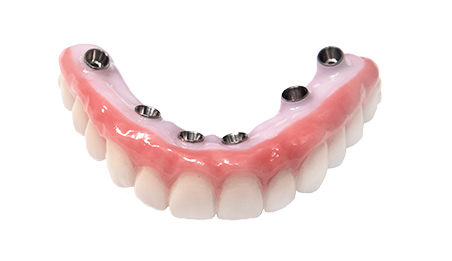Dental Sense for Beginners
Dental Sense for Beginners
Blog Article
Some Ideas on Dental Sense You Need To Know
Table of ContentsExamine This Report on Dental SenseGetting My Dental Sense To WorkGetting The Dental Sense To WorkThe 2-Minute Rule for Dental Sense
are medical tools operatively dental implanted into the jaw to bring back an individual's ability to chew or their appearance. They offer assistance for artificial (phony) teeth, such as crowns, bridges, or dentures. When a tooth is lost because of injury or illness, an individual can experience issues such as fast bone loss, malfunctioning speech, or modifications to eating patterns that lead to pain.Dental dental implant systems include a dental implant body and dental implant abutment and might also include a joint fixation screw. Same day dental implants. The oral implant body is operatively placed in the jawbone in location of the tooth's root. The oral implant joint is generally affixed to the implant body by the abutment addiction screw and expands via periodontals right into the mouth to support the affixed artificial teeth
(https://www.openlearning.com/u/matthewmusic-spvoez/about/)Framework of The Oral Implant System selecting oral implants, speak to your dental provider concerning the prospective advantages and dangers, and whether you are a prospect for the procedure. Things to consider: Your total health is an important consider establishing whether you are an excellent prospect for oral implants, just how long it will take to heal, and how much time the implant might remain in location.
Smoking cigarettes might affect the healing procedure and decrease the long-term success of the implant. The recovery procedure for the implant body might take several months or longer, during which time you usually have a momentary abutment in area of the tooth. the oral implant treatment: Thoroughly follow the dental health directions given to you by your oral service provider.
An Unbiased View of Dental Sense
Implant failure can cause the demand for another surgery to take care of or replace the implant system. Brings back the capacity to chew Recovers cosmetic look Aids maintain the jawbone from diminishing because of bone loss Protects the health of the surrounding bone and gums Assists maintain nearby (neighboring) teeth secure Boosts high quality of life Damage to bordering all-natural teeth throughout dental implant positioning Injury to the surrounding tissues throughout surgical treatment, such as sinus opening Injury throughout surgery (for instance, fracture of surrounding jawbone) Poor feature, such as seeming like the teeth do not attack together usually An experience that the tooth hangs or twisting in position resulting from a joint screw loosening up Implant body failure (looseness of the implant body) because of systemic infection, which may be most likely in clients with uncontrolled diabetes as a result of local infection in bone and gums sustaining the dental implant body because of delayed recovery, which may be most likely in individuals that smoke Problem cleaning up the gum tissues around the dental implant, resulting in bad oral hygiene Without treatment gum illness Post-surgical feeling numb because of nerve impingement or damages Constantly notify healthcare providers and imaging service technicians that you have oral implants before any magnetic resonance imaging (MRI) or x-ray treatments.
FDA is not familiar with any negative occasions reported for MRI or x-ray procedures with dental implants. Dental implants systems are commonly made of materials that adhere to international agreement criteria of the International Organization for Standardization (ISO) or ASTM International. These standards have details of what makes a secure product.

An oral implant is a framework that replaces a missing out on tooth. With screw-like devices, the doctor inserts an implant right into the jawbone, and it acts as an anchor for a fabricated tooth, called a crown.
Little Known Questions About Dental Sense.
Some people are not eligible for dental implant surgical treatment. It is for dental surgeons to run on people with: severe illnessuncontrollable metabolic diseasebone or soft cells disease or infectionIf these concerns are fixed, a person can have the surgery. In, oral cosmetic surgeons avoid running on people with: If individuals with any one of the above undertake oral implant surgery, there is a higher danger of the dental implant falling short.

Dental implant surgery is a personalized process. It's not the very same for everyone. The adhering to offers a basic summary of what you can anticipate your dentist, dental doctor, periodontist or prosthodontist to do: Put the dental implant operatively. Give you time to heal. Affix the post and last crown, bridge or denture.
Next off, your specialist will thoroughly put the oral implant into your jaw. Finally, your surgeon will certainly rearrange your gums Check This Out and close the incision with stitches. If your dental implant is near the front of your mouth, your dental practitioner will make a momentary tooth for you to put on up until you heal. In this way, you will not have a void in your smile while you recuperate.
Dental Sense Can Be Fun For Anyone
Your company can tell you what to anticipate in your circumstance. Throughout the healing phase, your jawbone needs to fuse to the dental implant. This process, called osseointegration, is vital for stability and long-term success. This process can take anywhere from three to 9 months. In many cases, it may take much longer.
Once your dental implant heals, your dental practitioner can connect the joint (tiny connector message) and your last reconstruction (crown, bridge or denture). This typically takes concerning one hour to finish and may call for a second small surgical treatment. You shouldn't really feel any discomfort during your dental implant treatment since your service provider will certainly use medication to numb your periodontals.
Report this page